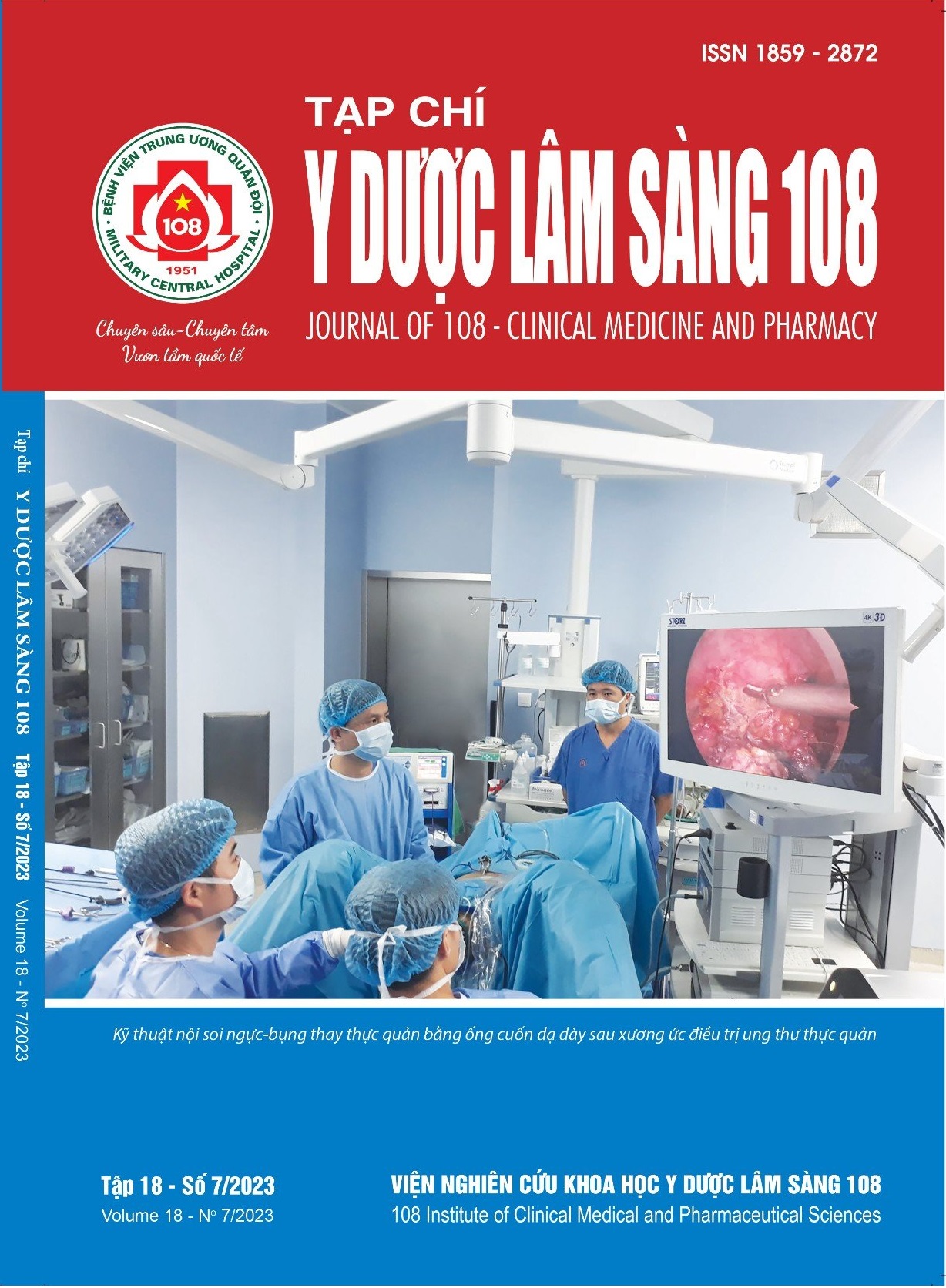Evaluation of relationship between hs-CRP plasma levels and some characteristics of patients after kidney transplant
Main Article Content
Keywords
Abstract
Objective: To investigate the relationship between plasma hs-CRP concentration and some characteristics of patients after kidney transplantation. Subject and method: A cross-sectional descriptive study on 115 patients after kidney transplantation. All patients were quantified plasma hs-CRP levels and determined the relationship with some characteristics of patients after kidney transplant: Age, gender, time after kidney transplant, diabetes status, hypertension, renal function after transplantation. Result: The concentration of hs-CRP at the high and moderate cardiovascular risk stratification levels was seen in hypertensive patients; proteinuria (+); have diabetes 4.537 times more; 3.659; 8.4 times compared with the group of patients without the above characteristics, p<0.05. There was no association between hs-CRP with age, sex, time after kidney transplant, dyslipidemia as well as decreased MLCT. Conclusion: The concentration of hs-CRP is related to many
Article Details
References
2. Seifert ME, Yanik MV, Feig DI et al (2018) Subclinical inflammation phenotypes and long-term outcomes after pediatric kidney transplantation. Am J Transplant 18(9): 2189-2199.
3. Folkmane I, Tzivian L, Folkmane E et al (2020) Predictors of hyperuricemia after kidney transplantation: Association with graft function. Medicina (Kaunas) 56(3).
4. Swastini DA, Wiryanthini IAD, Ariastuti NLP et al (2019) Atherosclerosis prediction with high sensitivity C-Reactive protein (hs-CRP) and related risk factor in patient with dyslipidemia. Open Access Maced J Med Sci 7(22): 3887-3890.
5. Nguyễn Văn Tuấn (2015) Nghiên cứu nồng độ TGF beta1 và hs-CRP huyết thanh ở bệnh nhân bị bệnh thận mạn. Luận án Tiến sỹ Y học, Trường Đại học Y dược Huế.
6. Otsuka K, Nakanishi K, Shimada K et al (2018) Ankle-brachial index, arterial stiffness, and biomarkers in the prediction of mortality and outcomes in patients with end-stage kidney disease. Clin Cardiol 42(7): 656-662.
7. Arashnia R, Roohi-Gilani K, Karimi-Sari H et al (2015) Effect of pioglitazone therapy on high sensitive C-reactive protein and lipid profile in diabetic patients with renal transplantation; a randomize clinical trial. J Nephropathol 4(2): 48-53.
8. Tofano RJ, Barbalho SM, Bechara MD et al (2017) Hypertension, C reactive protein and metabolic profile: What is the scenario in patients undergoing arteriography? J Clin Diagn Res 11(8): 19-23.
9. Furuhashi M, Saitoh S, Shimamoto K et al (2015) Fatty Acid-Binding Protein 4 (FABP4): pathophysiological insights and potent clinical biomarker of metabolic and cardiovascular diseases. Clin Med Insights Cardiol 8(3): 23-33.
10. Han M, Lee JP, Park S et al (2017) Early onset hyperuricemia is a prognostic marker for kidney graft failure: Propensity score matching analysis in a Korean multicenter cohort. PLoS One 12(5): 0176786.
11. Roberts WL (2004) CDC/AHA Workshop on Markers of Inflammation and Cardiovascular Disease: Application to Clinical and Public Health Practice: laboratory tests available to assess inflammation--performance and standardization: a background paper. Circulation 110: 572-576.
 ISSN: 1859 - 2872
ISSN: 1859 - 2872
